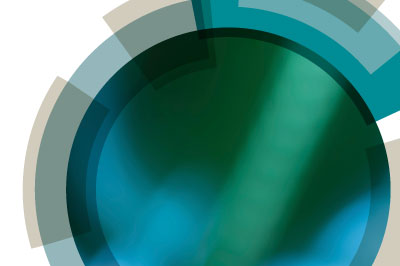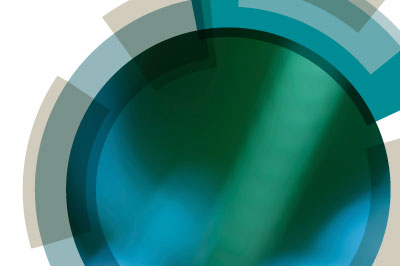Introduction
Organic semiconductors (OSCs), based on pi-conjugated molecules and macromolecules, are revolutionising the electronics industry. OSCs offer several key characteristics that can be used to provide major advantages over silicon based devices. OSCs can be made by cheap solution deposition techniques such as spin-coating, roll-to-roll processing and ink-jet and screen printing. Polymer based OSCs can be used to provide flexible devices and this, coupled with the fact that OSCs function effectively as thin films (ca. a few hundred nm thickness), means that the devices are lightweight, highly portable, extremely fashionable and exceptionally marketable.The most topical and potentially lucrative applications to date include organic light emitting diode (OLED) displays and lighting, organic photovoltaics (OPVs) and organic field effect transistors (OFETs). OLEDs have already reached the market and our understanding of structure-property relationships and photophysics in this field are already well established. In the case of OPVs and OFETs, the major challenge is to match the performance of amorphous silicon in analogous devices.
The emerging areas of molecular and bioelectronics and lasing should also see considerable growth over the next few years. Applications for these technologies are varied and include sensing, medical diagnostics, artificial assemblies, computing and information and communication technologies.
Aims
This Discussion encompasses a range of topical subjects, centred around the theme of organic electronics and photonics. It will bring together experts in chemistry, physics, biology and electronic engineering and thereby provide a multidisciplinary platform for debating current and future work in organic electronics.The Discussion will focus on four specific topics over the half-day sessions: organic photovoltaics and energy, organic lasers, bioelectronics and sensors and molecular electronics. The Discussion will appeal to a wide range of scientists and will collectively represent the most exciting developments in organic electronics research.
Format
The Faraday Division have been organising high impact Faraday Discussions in rapidly developing areas of physical chemistry and its interfaces with other scientific disciplines for over 100 years.Faraday Discussions have a special format where research papers written by the speakers are distributed to all participants before the meeting, and most of the meeting is devoted to discussing the papers. Everyone contributes to the discussion - including presenting their own relevant research. The research papers and a record of the discussion are published in the journal Faraday Discussions.
Themes
- Organic photovoltaics and energy
- Photonics
- Organic bioelectronics
- Sensors and molecular electronics












